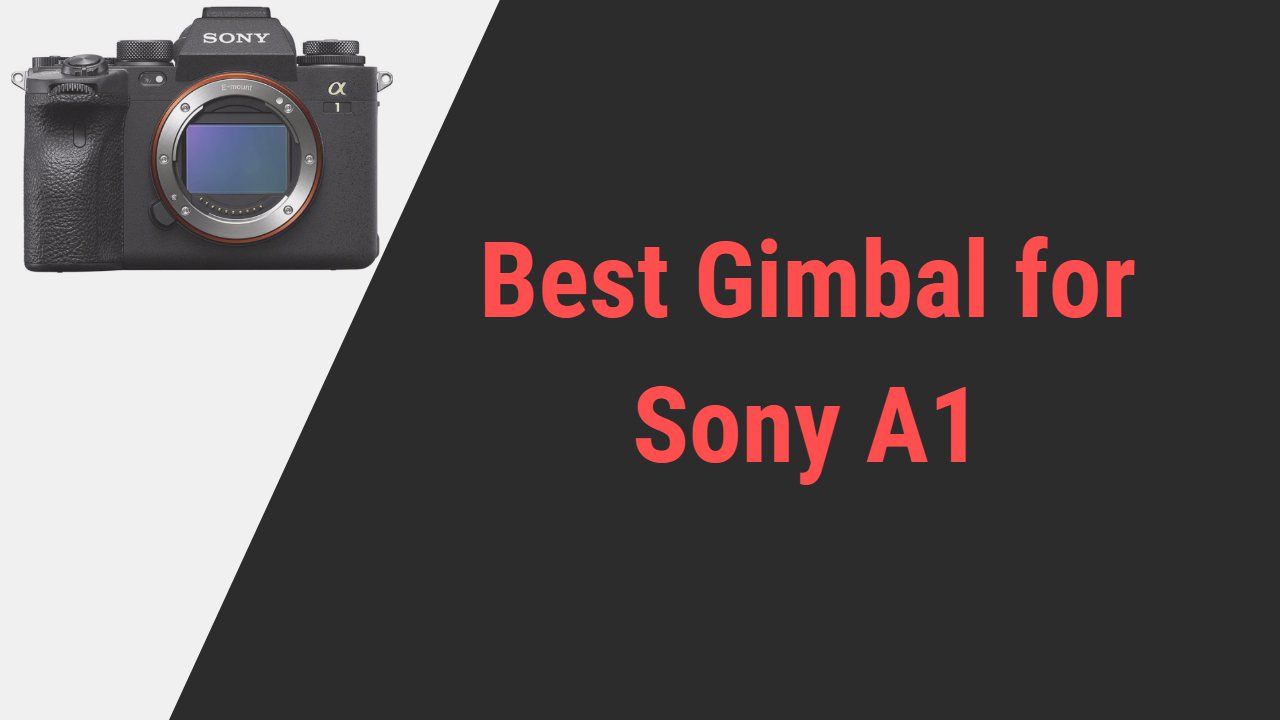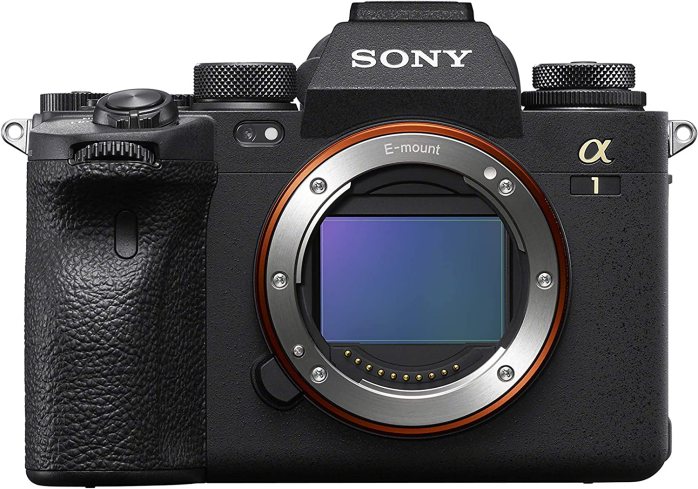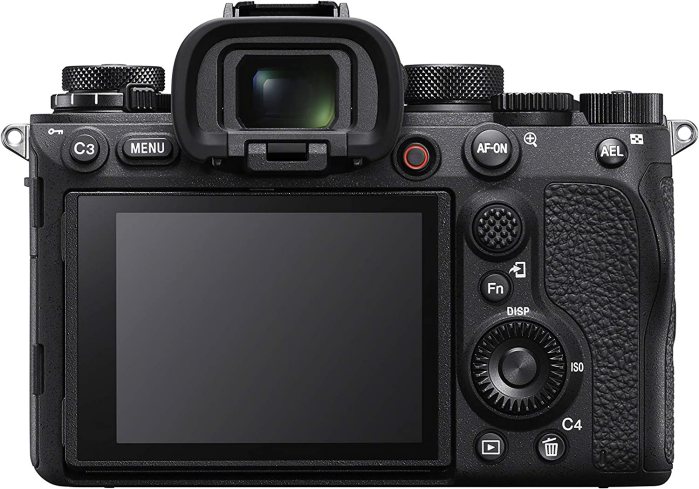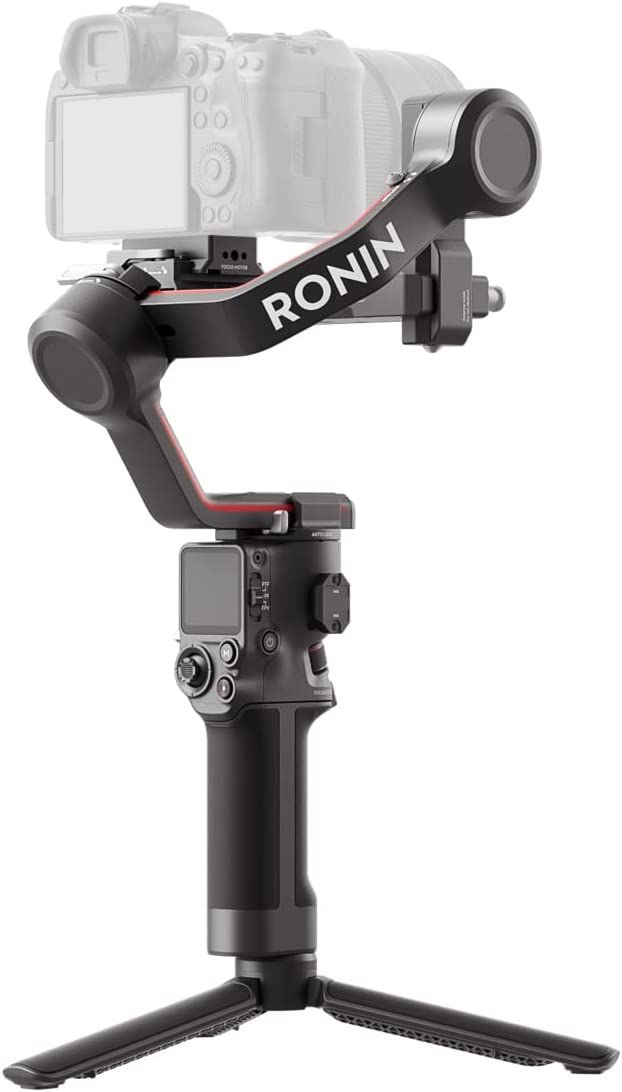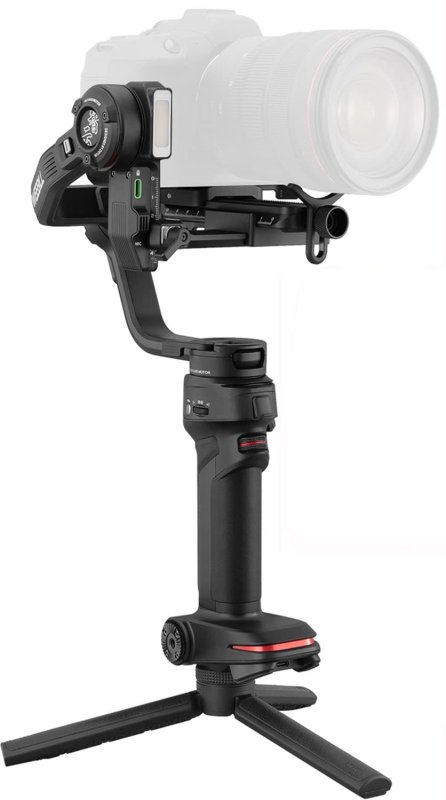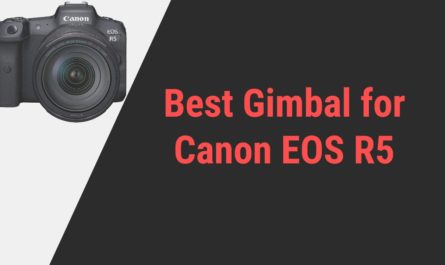There is nothing as powerful as Sony’s most fascinating creation Sony Alpha 1 camera, the truest miracle maker camera designed without any compromise with stunning resolution and intellect.
If you are into photography pretty dedicatedly, you can easily distinguish between a balanced and nourishing shot by gimbal and the raw, ordinary one in the blink of an eye; That’s how professional studios and corporate work.
No one will want to actually adore the unprofessional, blurry shot, no matter if it has been captured by any advanced camera. This is why we all run to the advanced tool gimbal to turn our fate upside down and lend us some cinematic filming ability.
Now, as crucial as it is to use the gimbal, there are more pressing matters to attend to first, which will be finding the ideal fit of the gimbal for your advanced camera.
Now, if we are talking about the Sony A1, there is a reason why it’s called the Alpha one series; the camera comes with some ravishing potential and function, which means no ordinary gimbal can coordinate with such a level of advancement.
Sony A1
Note:
All the gimbals mentioned here are tested with Sony A1 and work perfectly fine.
| DJI RS 3 (Best Overall)

|
| DJI RS 3 Pro (Most High-end - Highest Payload Capacity & Comes with Advanced Features)
    |
| Zhiyun Weebill 3 (Budget Pick)
    |
Thus, I am listing the one that can; Chosen by my personal experience, this high-end gimbal with sophisticated design, outstanding versatility, and spirit to create something exquisite.
In short, perfection is waiting to be paired with Alpha One in order to bring quality and compulsion to every shot. Suit yourself and find the best for you
Best Gimbal for Sony A1
1. DJI RS 3
Overview– Named and famous for the quality and reliable services, we have the masterpiece from DJI Brand. From its precious treasury, we have picked out DJI RS 3 at the top.
The brand launched this magnificent gimbal with the theme “Ready when you are,” giving means to support high-quality stabilization with the pretty sleek and light weighted body.
The gimbal is popular enough because of its tough support and easy configuration that grant user-friendly control suiting well to the beginner photographer.
Gimbal– DJI RS 3
Camera– Sony Alpha 1
Why does the DJI RS 3 best suit the Sony Alpha 1?
DJI RS 3 is a redesigned gimbal model that contains serious upgradation, which we believe has the potential to carry out Sony A1’s top-notch creativity.
The gimbal upgraded stabilization algorithm manages greater stability throughout the filming operation and grants a decent backup for the A1 in-built sensor-shift stabilization. And the 50-megapixel resolution of the camera can creatively bloom in shooting different intelligent motions.
What is the DJI RS 3 expertise?
Known for its reliable potential, the camera satisfies the criteria of being the top-notch gimbal; The better stability, convenience, and unrivaled performance, DJI RS 3 does have everything.
Mounting– One of the best factors of the gimbal is its compatibility with the vast camera category. For calibration, the gimbal uses dual-layered quick-release plates so that the photographer won’t need to rebalance the camera or other accessories.
On top of that, the Automated Axis lock secures the parameters and expands the creativity horizon enough to catch the different angles. You can also complement different accessories along the way because of the gimbal’s highest payload ability to carry up to 6.6 pounds of weight.
Designing– The gimbal has a modular design with a sharp feature structure; you can count on the gimbal’s strength because of the industrial-graded composite material. Other than that, the basic configuration is carved on the barrel. Tougher than it seems, the gimbal is being blessed with the least weight of 2.4 pounds.
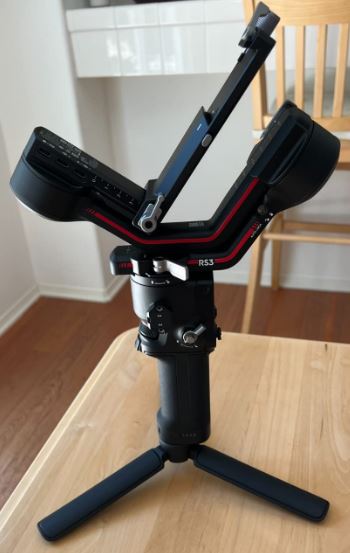

Performance– You cannot question the gimbal performance; With the third Generation RS Stabilization Algorithm the photographer gets to experience better balancing in every dynamic subject shot.
The increased motor torque implies enhanced stabilization over the fast-moving subject or eliminates the difficulty in catching low-angle shots. This high-leveled stabilization can be embraced in different shooting modes like the intelligent function mode such as Dolly Zoom, Motion lapse, and Time tunnel.
Controls– As I said, RS 3 is famous for its easiest and most straightforward control; it supports both Wireless shutter control and physically integrated controls. The wireless control can be implemented via Dual Mode Bluetooth technology.
Also, the gimbal uses physical handling through an integrated dial. It has the Fine-tuning Knob for the camera positioning, a simple slider for switching the shooting mode, and a front dial for control and focus.
The gimbal supports live feeding through the Ronin Image transmitter (RavenEye Transmitter). And then there is also the OLED panel that is sized 1.8 inches with an 80% larger display approach.
Power– The attractive design of the gimbal gets even better with the easiest cartridge design; this makes swapping batteries easy and makes things super convenient.
The gimbal comes with an in-built Lithium-ion battery charged with 3000 mAh power that grants 12 hours of straight runtime within a single charge; once the battery gets drained off with the quick charging mechanism, the battery takes less than 2.5 hours to be recharged quickly.
Bottom Line– With a budget-friendly gimbal with decent payload, satisfying abilities, and extraordinary results, now the dream of perfect photography can come true; you only need to choose this one of the best options.
Pros
- Tough support and durable body
- Dual Layered quick release plates
- Improved Auto Axis lock
- Wireless and integrated shutter controls
- Upgraded stabilization and motor torque
- Large OLED touch panel
- Support live to monitor
- The infinite source of power
- Creative motion function shot
- Lightest weight and highest payload
Cons
- Slightly less durability.
- Takes longer to recharge
2. DJI RS 3 Pro
Overview– A little more is always better if you are walking down the path of professionalism; If you feel anything is lacking in DJI RS 3, you only need to peek at DJI RS 3 Pro, the gimbal with the upgraded feature, smart handling and creativity abilities.
DJI RS 3 Pro is referred to as one of the most professional gimbals; because of its unrivaled advancement. The gimbal is potent enough to grant immense stabilization in either a dynamic shot or motion filmmaking.
The unquestionable capabilities of the camera are destined to write a new cinematic experience which is why it’s considered the best option for FX3
Gimbal– DJI RS 3 Pro
Camera– Sony Alpha 1
Why is DJI RS 3 Pro best suited for Sony Alpha 1?
I personally am a big fan of this DJI RS 3 Pro camera gimbal; this is because of its masterful potential to craft creative shots and easy coordination and balance with any professional camera.
RS 3 Pro indulged with better innovation like tracking and vision stuff while considering their user convenience; the brand kept the control easy and straightforward. The highest payload is also the option why I prefer the gimbal while it’s quite the star by its high-end algorithm, so there is nothing more professional than the DJI RS 3 Pro.
What is the DJI RS 3 Pro expertise?
The upgraded version of DJI RS 3 is an advancement with some fascinatingly embedded features and a wonderful innovation that bends to provide excellent filming. A win-win for Sony Alpha 1.
Mounting– The calibration of the RS 3 Pro gets better with the upgrades; The easy place and lock mechanism work fine with the heavy camera. Moreover, the easy, quick-release plates ensure the stability of camera mounting.
The new extended lower quick-release plates allow the installation of the lens more securely. Apart from that, the gimbal uses the automated axis lock to lock and expand the horizon in order to shoot creativity. The gimbal is blessed with the highest payload of 10 pounds to allow adding multiple accessories.
Designing– The Gimbal is professional for some reason; the strongest configuration, the build, and the structuring explain the durability of the body; the layered sheets of uncut carbon fiber enhance the strength of the gimbal and make it lighter in a way. The gimbal weighs 3.3 pounds in the figure, but increased stiffness and rigidity add numbers to its life.
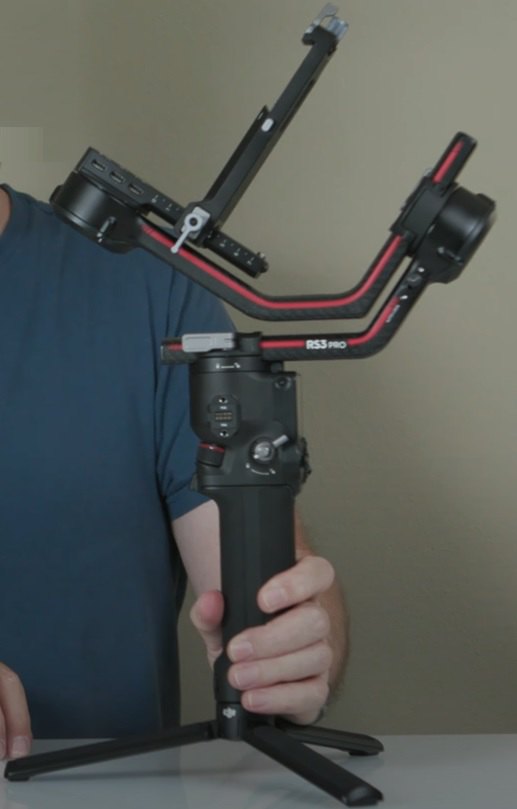

Performance– Empowered with the next-generation upgraded stabilization algorithm, the gimbal works with 20% enhanced stability throughout the fastest running shots and lower angle shots. In comparison to the RS 3, this pro model is professional in balancing quality; the increased motor torque allows a super smooth result at the dynamic subject.
Controls– Equipped with smart innovation, the gimbal supports both wireless and physically integrated controls. With the help of Dual mode Bluetooth technology, the person can implement a reliable wireless connection.
While the physical integrated control can also help you achieve the result with ease. As in the physical control, the gimbal uses the latest fine-tuning knob to adjust the camera position by sliding the camera forward and backward and managing the Auto-Tune value accordingly to the mounted object weight.
Other than that, the gimbal uses a simple slider for the switching mode between pan follow and motion function and the front dial for zoom and focus. A distinct Teflon-coated component is used for the lower friction resistance with the heaviest mounted object.
The gimbal is famous for its wide vision because of its larger display through an OLED full-color display panel that is in 1.8 inches size. The display panel uses touch-oriented control.
Also, the gimbal supports the High-bright remote monitor that can be used with the Ronin 4D Handgrips, DJI Master Wheels, or others. Also, the photographer can keep an eye on the subject or keep it in the frame using the improved Active Track 3.0
Power– The gimbal is configured with the smartest, more powerful battery of all time. The in-built Lithium-ion Polymer battery empowered with 1950 mAh is destined to grant 12 hours of working period within a single charge.
The cartridge design of the body makes the swapping of batteries more effortless and faster. With the quick charging mechanism and the support of 18-Watt power, the gimbal can be recharged within less than 1.5 hours to keep the operation going on.
Complimentary– The gimbal has the rarest of all DJI RS SDK protocols, A in-built mechanism that allows the stabilization to work with the maximum feature for an extensive scenario. Apart from that, the gimbal also has an Extensive port for accessories designed in structure.
The dual RSA/ NATO ports and others accompany the various accessories such as Twist Grip Dual handle, control handle, or else. Also, the gimbal is called LiDAR compatibility, which means it makes the focusing interesting and easier; this specifies the new optional LiDAR Range finder projecting 43200 ranging points within a certain distance to catch a better vision of the subject
Bottom Line- If you desire to buy a professional tool for your high-end camera, nothing can beat the DJI RS 3 Pro; the innovation, the ergonomics, and design, the brain, everything is miraculously perfect in the gimbal. So just go for it.
Pros
- Effective LiDAR compatibility
- Professional stabilization tool
- High Bright remote monitor
- Additional port for accessories
- Powerful battery and fast charging
- Wide coverage for stabilization
- Active Track 3.0 supporting
- Carbon Fiber construction
- The largest Display panel of 1.8 inches
- Better stabilization and security
- The highest payload for tools
Cons
- Doesn’t come cheap
- With a heavy camera, the weight could be an issue
3. Zhiyun Weebill 3
Overview– And the last in the list is one of my favorites, the gimbal with infinite power, ability to cast creativity, and willingness to perform an above level of stabilization in every image.
The wonderfully designed Weebill 3 with a redesigned structuring, lightest weight, and attractive visuals single-handed gimbal from the trustworthy Zhiyun Expertise is something you can consider for your Sony Alpha 1 camera.
The improved design and features are enough to impress the photographer when the brand indulges the backup of the longest power and, above all, the least affordable price tag. This might be your best shot at stabilization.
Gimbal– Zhiyun Weebill 3
Camera– Sony Alpha 1
Why Weebill 3 suits best to Sony Alpha 1?
Well, As I mentioned, after DJI RS 3, I trusted Zhiyun weebill 3; first, they have an enormous creativity approach; the Weebill 3 has so much to offer. But all I can think about is the ease I experience with my Alpha 1 filmmaking.
I prefer this gimbal because of its smart, modular, yet highly ergonomic structuring; intelligence is complimentary. The professionalism level of both the camera and gimbal matches the vibe, and the innovation of both blends in to create something alluring.
If you want to adapt to a change but manage the reliability level to peak, Weebill 3 is made-for-each-other.
What is the Weebill 3 expertise?
As I said, the gimbal is popular for its top-notch intelligence, qualities that make it different from ordinary. The design, convenience, and budget it’s like Weebill 3 got its expertise all around-
Mounting– The sitting of the camera over the gimbal is easiest; all you have to do is stabilize and lock it. Rest is taken care of by the Effective and upgraded quick-release system. With the dual-layered Quick release plates, the chances of rebalancing get eliminated.
And above that, it has a magnetic Wrench Embedded inside the design; this secures the parameters and protects your expensive camera from accidental falling. At last, the improved Auto Axis lock of the gimbal expands its creative horizon. The payload, however, is not specified, but you can add several accessories to enjoy filmmaking.
Designing- The gimbal has the strongest build, and you are free to check its strength and durability; The industrial top-graded material places standard strength to carry heavy cameras. But the best part is the revised design of the gimbal is the structure in sling 2.0 only to embrace heavy comfortability.
The gimbal body is L-shaped, which means no more hassle of carrying a tripod or stabilizer; the gimbal can stand on its own. Additionally, the extendable handle grip allows capturing the trickiest angle while the wrist support manages the comfort level during long-hour filming. On top of everything, the least weight of 2.4 pounds is not an issue either.
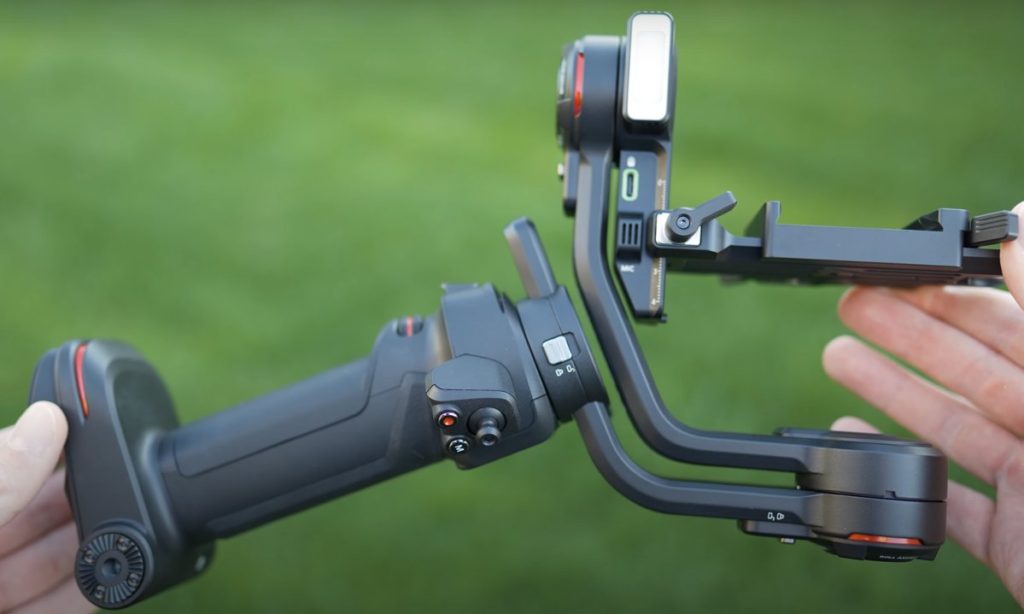

Performance– No question of the quality of stabilization either, Like the innovation, the gimbal also masters the art of balancing. The stabilizer is designed with a powerful and effective motor that uses an optimized stabilization algorithm to balance the dynamic shot. These work on every low-angle shot and the fastest-running subject scenario.
Controls– There is no hassle with the gimbal controls and stuff; the gimbals use both wireless and physical dials for controlling their own and the camera functions. The gimbal uses a trigger button for switching through the shooting modes while the wheel controls the adjustment of camera parameters.
Remember these both dials can be customized according to your own requirement. The gimbal operation and parameters can be monitored on the OLED touchscreen panel, which is 0.96 inches. Also, this whole thing can be connected via Zhiyun’s official application or wireless technology like Bluetooth and Wi-Fi.
Power– Zhiyun never disappoints its user by encouraging bad battery backup; weebill 3 is blessed with enormously powered lithium-ion batteries. These batteries last forever; their powerful composition and charging of 2600 mAh sophisticatedly grant 21 hours of longest work time within a single charge.
The batteries can be charged separately without interfering with your secured gimbal, and it would take less than 2 hours to fill up the gimbal battery’s juice.
Complimentary– Unlike the ordinary gimbal, this Weebill 3 comes with a special fill light which not only grants better image quality but also throws that lost cinematic effect in the footage.
The gimbal uses in-built fill lights to manage the illumination during dark-hour filming. These fill-in lights consist of 1000 lumens of brightness; the brightness and color temperature can be modified and adjusted according to the user’s needs. This grants a rare dramatic-looking professional effect in the frame.
The gimbal also has an in-built microphone that comes within the 3.5mm audio port to maintain a better videography streak.
Bottom Line– Apart from the reliability, the Weebill 3 has much more to offer; it has the never seen creativity intention and master-mind innovation; A wonderfully ergonomic design, and exquisite shooting dedication; the Best part is it doesn’t come with a heavy price tag either.
Pros
- No Tripod required body
- Optimized stabilization algorithm
- Greater battery with 21-hour runtime
- Improved Sling 2.0 body
- Additional extendable handle and wrist rest
- Configured microphone port
- Better illumination with fill-up lights
- Compact body with the least weight
- Quick release system
- Customizable trigger and wheel controls
- Easy connectivity and control
Cons
- Payload should be specified
- The display panel could be better
What enhancement does the Sony A1 experience when paired with a gimbal?
Sony Alpha 1 camera is the biggest craze in the photography world because of its high performer characteristic, But so does the Gimbals. Gimbals have certainly become the hot gossip of the town.
The stunning new tools hold the potential to transform your same old daily photography into the most heavenly one. Equipped with a top-notch innovative sensor and motor, the gimbal allows the digital camera to mount on the top and rotate the same around the given axis in order to shoot wonderfully stabilized shots.
To improve the stabilization in your footage indirectly, the quality and dramatic effect in your footage, this smart tool needs to be by your camera side.
The following factor can give justification to this argument along with, subjecting how a gimbal can change not only quality but the convenience of the whole filming while using the A1 camera on it.
Quality– One of the most crucial impacts of using a gimbal with Sony A1 is the enhancement of image quality. Once the gimbal gets done with the compensating of micromovement, you will see a different level of professionalism in the shot. The image tends to be sharper, clearer, smoother, and more balanced. Some of the gimbals also have better exposure management which is a cherry on top for the camera.
Creativity– Sony A1 already has a reputation for filming cinematic shots, but with the gimbal, that creativity level expands the horizon. Gimbals allow the Sony A1 to shoot the trickiest angle and creative shooting modes such as multiple follow, motion function, panorama, track, and much more. The gimbal also lets the camera explore and trap some wonderful aerial shots in the way.
Controls– Being the advanced camera is beneficial as well as hazardous in some way; like the upgraded motor means chaotic configuration and challenging control. Gimbal with some significantly straightforward control panel makes things easiest to manage during filming. Some of the camera’s basic setting parameters can be accessed directly in the gimbal keeping the convenience in touch.
Convenience– Strongest motor means a complicated configuration, which somewhere leads to a hefty little design or the heaviest weight. Even not the gimbal still manages to maintain comfort as it allows holding the camera for as long as you want during filmmaking, avoiding any back or hand strain. Also, the gimbal provides better security and adds extra efficiency with the travel-friendly feature.
Versatility– Even though the Sony Alpha 1 is professional and doesn’t require additional accessories, Carrying a gimbal with the camera opens the door to heavy versatility. This means granting the opportunity to let other accessories mount tags along, such as artificial lights, mics, and others. This is all purpose for expanding the creativity horizon.
Power– The Sony A1 is destined to shoot the highest resolution imagery and neat and smooth video for a certain period through its powerful Li battery. Using a gimbal is beneficial to the camera as it adds some extra hours to the filming by acting as the battery backup with its twelve fourteen-hour capacity.
Preparation for buying the rightful gimbal for Sony A1 (Sony Alpha 1)
Gimbals are the new trends in the photography world, the smartest tool assigned to bring that lost gleam in the photos by applying the compensation for the shakiness and pouring the stabilization mechanism in the photos.
Buying a gimbal for the Sony Alpha 1 camera doesn’t come easy or cheapest, and you can’t afford mistakes. Since gimbals are not something you can put on your grocery list, there are a few measures or preparation you can do before getting yourself the ideal gimbal.
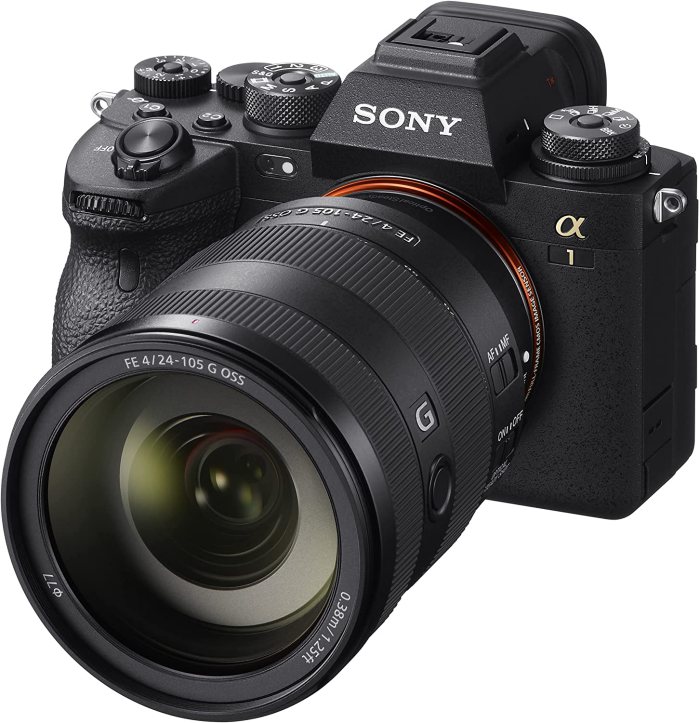

- Check the camera compatibility; In this case, look out for the Sony A1 weight, dimension, processor, and motor and research a little on what gimbal it can support.
- Once you have figured that out, outline what kind of gimbal you will need to shoot professional pictures; like for Sony A1, you will need a three-axis gimbal with a fruitful function on top.
- Get out in the market on the look for a gimbal coming from a reputed brand like the DJI, Zhiyun, and others. Remember, do not encourage purchases from any ordinary brand.
- Make a list in your mind about the things you will be needing in your gimbal and then outline the budget; Now match the requirement and budget; do not buy anything that looks fancy but is not needed.
- Once you figure that out, determine the gimbal in the market; do not forget to check the gimbal’s maximum payload and its ability to carry maximum weight and relate it with the A1 weight.
- Do not forget to look after the gimbal design and ergonomics; since the Sony A1 is a mid-level camera, you don’t need to buy a hefty gimbal. Consider a foldable design or other ergonomics like wrist support or handle extension.
- One of the most crucial factors is not to forget to check the gimbal weight; make sure your future gimbal doesn’t bear heavy weight and enough to kick start the maneuverability.
- Take a quick peek over the gimbal controls and handling panel; make sure the whole controlling and managing stuff is easiest and not challenging (I prefer both wireless and physical control dials)
- Look out a little for the gimbal innovation, like the additional display panel, its stabilization mechanism, and its versatility; In short, check out the performance status of the gimbal before purchase.
- And lastly, make sure you are aware of the battery; the gimbal is using its composition and its power because that defines the battery runtime. Consider the gimbal with a longer hour of runtime and the quickest charging.
Sony Alpha 1- The ultimatum Beast
Sony, the finest name in the photography world, has never disappointed its fandom, and so does this very time. The design house of Sony has poured its whole competency into crafting this peculiarly amazing professional camera Sony Alpha 1 (A1).
The truest flagship of Alpha can be justified by the camera’s unbeatable performance, potential, and perspective. The Sony A1 camera is designed without any compromises, the advanced mirrorless camera offering the highest resolution and impressive video filming ability.
The iconic design house of Sony introduced this camera at the end of January 2021 at date 27. The brand injected some ravishing functions to expand the gimbal’s creativity horizon.
The camera comes with an upgraded ISO, in-built stabilization, better video quality, high speed, focusing, and better power in order to give a better filming experience. The alpha model of the filmmaking world, the full frame mirrorless camera, is consuming such dazzling features associated with the higher price tag of $6500 for the body only.
The primary characteristic of Sony Alpha 1
Not just the big bang theory, I am going to leave the trail of the Sony A1’s enchanting features, The one that made the camera quite the charm in the photography world. Let’s have a nice and deep look over them.
Processor
- The high performance of the Sony A1 is the result of the Dual Bionz XR image processor working through the mirrorless body of the camera with a higher performance rate and speed.
- The Sony A1 is also configured with a stacked CMOS sensor type-sized full frame and blessed with a 50-megapixel resolution to shoot still imagery with clarity.
Videography
- The camera has the miraculous ability to shoot Ultra HD 8K videos at the highest 30p speed, Ultra HD 4K videos at the speed of 120p, and the regular HD at 60p speed.
- Also, the camera is associated with the super 35 sensor crop modes within the 4k and 1080 p resolution. And it also comes with an in-built stereo microphone for better recording.
Illumination
- The camera included the Auto ISO for managing the image quality during dark hours. The ISO ranges from ISO 100 to ISO 32000, which can be expandable to ISO 102400 when required.
- The Sony A1 also uses a better exposure management method within different modes, aperture priority, manual, program, and shutter priority, with a -5 to +5 EV exposure range.
Focus
- The Sony A1 camera is adapted to use both Auto and Manual focus; this focusing can be done in different focusing modes with different sensitivity levels ranging from -4 to + 20 EV Autofocus sensitivity.
- The Camera uses continuous Servo AF, Direct Manual focus, manual focus, and single servo AF mode; All with 759 phase-detection points and 425 contrast-detection points.
Stabilization
- Approaching professionalism, the camera supports the sensor-shift image stabilization that uses approximately 5.5 shutter stops to compensate for the micromovement affecting the quality of the image.
Shutter
- The camera supports the professional expertise of both electronic shutters and mechanical focal plane shutters. Apart from that, it has a 1/8000 to 30 seconds speed through the mechanical shutter, while 1/8000 to ¼ seconds in movie mode with an electronic shutter.
- On the contrary, the shutter grants up to 30 frames per second speed for raw continuous shooting with the electronic shutter and up to 10 frames per second for raw continuous shooting with a Mechanical shutter.
Display
- The wonderfully advanced camera A1 is designed with the in-built Electronic OLED viewfinder that is sized 0.64 inches with a 9.43 million dot resolution. The viewfinder grants live vision with 100% coverage and a 09.9x magnification rate.
- Secondly, the Sony A1 comes with a better user interface Tilting LCD panel with full touch control; is Sized at 3.00 inches, and configured in 1440K dot resolution for better vision of imagery.
Storage
- The camera is professional, which means it supports two different memory card slots for holding the SD card and preventing buffering and storage issues during filming.
- Both of the memory card slots support the CF express Type A or SD in UHS-II bus formatted card.
Interface
- The camera is configured with one upgraded HDMI output video interface and a 3.5 mm Stereo Headphone and microphone Audio Interface. Along with the USB C power input for the fastest charging and stuff
- But in addition, the Sony A1 includes one USB-C data output, one PC sync socket output, one RJ45, and the almighty Sony Multi or micro-USB port interface.
Power
- With such a great burden of advanced performance, the camera needed to be working for a decent period; which is why it comes with the strongest lithium-ion battery that can be recharged whenever needed.
- The lithium-ion battery is charged with 2280 mAh power, enough to grant approximately 430 constant shots within a single charge. Once the battery gets drained off, it can be recharged quickly with USB C fast charging.
Engineering
- The powerful Sony Alpha 1 body is designed in the SLR style and with a composite of Magnesium alloy; one that grants strength but keeps the weight least.
- The camera’s creativity is not limited, and it can be used under any weather with ease thanks to its ergonomics. And to complement that, it has the least weight of 737 grams when paired with a battery.
Frequently Asked Questions (FAQs)
Q. Which gimbal is better for Sony Alpha 1, two or three axes?
That literally is the simplest question, a three-axis gimbal. It’s like, duh, have you seen what miracle the Sony Alpha 1 can perform? A camera with so much potential and advancement requires something as powerful, and if you know, two-axis gimbals cannot grant that wish.
Three-axis gimbals are worthy of the Alpha 1 performance because they are destined to rotate on all three-axis offering better stability, performance, creativity, and function, while the two-axis gimbal lacks this due to the prohibition of rotating on to the two axes only. But if you want to look on the bright side, these gimbals come within a pocket-friendly budget and are compact and lightest in physics.
Q. What is the expertise of Sony Alpha 1?
As I said, Sony has literally poured the impeccable expertise of their whole team into curating this professional camera. The Sony A1, aka Alpha 1, is a spectacularly advanced camera that is designed without any compromises. The full-frame mirrorless camera is configured with a high-speed processor and effective sensor that gives 50 MP resolution and up to 8K shooting capability.
The Alpha true flagship Sony A1 is built for high performance, speed, sensitivity, and professional workflow; counting on the features, the camera has everything the Auto ISO with valid range, marvelous focusing, stabilization, the display, exposure management, and power; the modular fashionable design is complimentary.
Q. What is the purpose of a gimbal?
The gimbals are generally the support system for the camera, one that is destined with the glorious purpose of stabilizing the slightest movement held in the filming. They have the function of compensating the micromovements using their sensor and motor and stabilizing the whole footage after comforting the image quality.
They work like a device that pivots to rotate the camera mounted on an axis in order to shoot different angles. Apart from the stabilization, the gimbal also helps a person with different shooting mode purposes, and ergonomics, and acts as battery backup for a longer period working so technically, they are burdened with a glorious purpose.
Q. How much can a gimbal for Alpha 1 cost?
Gimbals are designed to be user-friendly in controlling, performing, and budgeting, so they do not generally come with tight prices, but their tag can differ according to the functions, design, and brand. Since the Sony Alpha 1 camera is an advanced level of the tool, it requires the rightful pairing of a gimbal, which means the ideal range of gimbal for the Sony A1 can be rounded up from $499 to $999.
Under this range, you can get the most professional tool you require, like the DJI RS 3 Pro. However, if you are tight on budget and don’t feel like spending a lot, you can go for any affordable gimbal, which should range from $399 to $499. I personally recommend not buying any gimbal under $299 if you are serious about the filming
Summary
There comes the end concluding every powerfully functional gimbal and camera expertise that you need to know if you are leading the way down to cinematic shooting.
All three gimbals mentioned above are extremely powerful, which I guess you have concluded till now, but the thing you need to know is all the gimbals wonderfully fit the Sony Alpha 1 supremacy; And together, they are literally unstoppable.
Remember, there are numerous gimbal brands claiming the best on the market, but you don’t have to be strife out in the middle of a fake; It is utterly important to pick the gimbal that your camera supports and that goes with your standard and budget.
So don’t think for a second if you too want to embrace the success; if you want to be the guy who frames the cooked-up professional on camera, just get your hands on this masterpiece.
I hope I have been helpful till now and played my part in letting you choose the ideal suitor for your Alpha 1; I would love to hear about that in the comment section.
Also, if you find this post helpful, it might help another struggler in the photography world, do not forget to share it.

